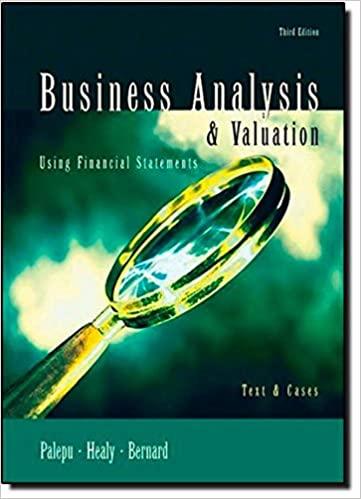Answered step by step
Verified Expert Solution
Question
1 Approved Answer
1 . The distinction between investment - grade debt and non - investment - grade debt is best described by differences in: A . tax
The distinction between investmentgrade debt and noninvestmentgrade debt is best described by differences in:
A tax status. B credit quality. C maturity dates.
A bond issued internationally, outside the jurisdiction of the country in whose currency the bond is denominated, is best described as a:
A Eurobond. B foreign bond. C municipal bond.
When classified by type of issuer, assetbacked securities are part of the:
A corporate sector. B structured finance sector. C government and governmentrelated sector.
Compared with developed market bonds, emerging market bonds most likely:
A offer lower yields. B exhibit higher risk. C benefit from lower growth prospects.
With respect to floatingrate bonds, a reference rate such as MRR is most likely used to determine the bonds:
A spread. B coupon rate. C frequency of coupon payments.
The variability of the coupon rate on a Liborbased floatingrate bond is most likely caused by:
A periodic resets of the reference rate. B marketbased reassessments of the issuers creditworthiness. C changing estimates by the Libor administrator of borrowing capacity.
Which of the following statements is most accurate? An interbank offered rate:
A is a single reference rate. B applies to borrowing periods of up to years. C is used as a reference rate for interest rate swaps.
An investment bank that underwrites a bond issue most likely:
A buys and resells the newly issued bonds to investors or dealers. B acts as a broker and receives a commission for selling the bonds to investors. C incurs less risk associated with selling the bonds than in a bestefforts offering.
In major developed bond markets, newly issued sovereign bonds are most often sold to the public via an:
A auction. B private placement. C bestefforts offering.
Which of the following describes privately placed bonds?
A They are nonunderwritten and unregistered. B They usually have active secondary markets. C They are less customized than publicly offered bonds.
A mechanism by which an issuer may be able to offer additional bonds to the general public without preparing a new and separate offering circular best describes:
A the grey market. B a shelf registration. C a private placement.
Which of the following statements related to secondary bond markets is most accurate?
A Newly issued corporate bonds are issued in secondary bond markets. B Secondary bond markets are where bonds are traded between investors. C The major participants in secondary bond markets globally are retail investors.
A bond market in which a communications network matches buy and sell orders initiated from various locations is best described as an:
A organized exchange. B open market operation. C overthecounter market.
A liquid secondary bond market allows an investor to sell a bond at:
A the desired price. B a price at least equal to the purchase price. C a price close to the bonds fair market value.
Corporate bond secondary market trading most often occurs:
A on a bookentry basis. B on organized exchanges. C prior to settlement at T
Sovereign bonds are best described as:
A bonds issued by local governments. B secured obligations of a national government. C bonds backed by the taxing authority of a national government.
Which factor is associated with a more favorable quality sovereign bond credit rating?
A Issued in local currency, only B Strong domestic savings base, only C Issued in local currency of country with strong domestic savings base
Which type of sovereign bond has the lowest interest rate risk for an investor?
A Floaters B Coupon bonds C Discount bonds
Agency bonds are issued by:
A local governments. B national governments. C quasigovernment entities.
The type of bond issued by a multilateral agency such as the International Monetary Fund IMF is best described as a:
A sovereign bond. B supranational bond. C quasigovernment bond.
A bond issued by a local government authority, typically without an explicit funding commitment from the national government, is most likely classified as a:
A sovereign bond. B quasigovernment bond C nonsovereign government bond.
Which of the following statements relating to commercial paper is most accurate?
A There is no secondary market for trading commercial paper. B Only the strongest, highly rated companies issue commercial paper. C Commercial paper is a source of interim financing for longterm projects.
Eurocommercial paper is most likely:
A negotiable. B denominated in euros. C issued on a discount basis.
For the issuer, a sinking fund arrangement is most similar to a:
A term maturity structure. B serial maturity structure. C bondholder put provision.
When issuing debt, a company may use a sinking fund arrangement as a mean
Step by Step Solution
There are 3 Steps involved in it
Step: 1

Get Instant Access to Expert-Tailored Solutions
See step-by-step solutions with expert insights and AI powered tools for academic success
Step: 2

Step: 3

Ace Your Homework with AI
Get the answers you need in no time with our AI-driven, step-by-step assistance
Get Started


